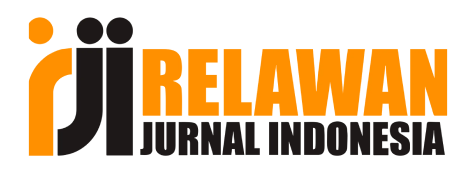Penerapan Keadilan Restoratif dalam Penegakan Hukum Pidana: Studi Kasus di Kepulauan Selayar
DOI:
https://doi.org/10.46870/jhki.v5i1.961Keywords:
Restorative Justice, Criminal Law, Law EnforcementAbstract
The purpose of this study was to: (1) assess the need for restorative justice to be applied as soon as possible in criminal law enforcement; and (2) assess how restorative justice is regulated when it comes to its use as a substitute for case resolution. This study employs a descriptive qualitative methodology and an empirical law-based research strategy. Data analysis is done using the findings from informant interviews. The findings demonstrated that: (1) Essentially, the Selayar District Attorney's Office's use of restorative justice in the law enforcement process during the settlement of criminal cases can bring justice to the litigants—that is, the criminals, the victims, and any interested parties. Proportionality justice, which offers a balance of interest recovery between the criminal and the victim, is the context of justice within the framework of the restorative justice approach. The victim receives compensation for the losses he sustained as a result of the acts of the offender, and the offender is returned to his pre-crime rights and no longer considered a former offender. Within the jurisdiction of the Selayar Islands District Attorney's Office, a number of factors, including legal substance, legal structure, legal culture, and facilities and infrastructure, have a significant impact on the restorative justice.
References
Aertsen, Ivo, Daniela Bolívar, and Nathalie Lauwers. "Restorative justice and the active victim: exploring the concept of empowerment." Temida 14.1 (2011): 5-19. https://doi.org/10.2298/TEM1101005A
Akaseh, Naima, Hambali Talib, A. Muin Fahmal, and Nasrullah Arsyad. “The Nature of Restorative justice in the Perspective of the Settlement of Traffic Accidents.” IOSR Journal of Humanities And Social Science 26, no. 1 (2021): 9–14. https://doi.org/10.9790/0837-2608040914
Akbar, Hafiz Prasetia. "Comparative Study of Restorative Justice Application: Evaluation of the Practise in Indonesia and Scotland." Jurnal Litbang Polri 27.1 (2024): 74-87. https://doi.org/10.46976/litbangpolri.v27i1.227
Ambos, Kai. “Punishment without a Sovereign? The Ius Puniendi Issue of International Criminal Law: A First Contribution towards a Consistent Theory of International Criminal Law.” Oxford Journal of Legal Studies 33, no. 2 (2013): 293–315. https://doi.org/10.1093/ojls/gqt005.
Andi Asrul Sani, Lauddin Marsuni, dan Askari Razak. “Efektivitas Pelaksanaan Peraturan DaerahProvinsi Sulawesi Selatan: Studi Kasus Pada Bapemperda DPRD Provinsi Sulawesi Selatan.” Journal of Lex Generalis (JLS) 4, no. 2 (2022): 404–17.
Apong Herlina dkk. Perlindungan Terhadap Anak Yang Berhadapan Dengan Hukum. Jakarta : PT RajaGrafindo Persada: PT. Raja Grafindo Persada, 2004.
Atilola, Olayinka, Gbonjubola Abiri, Eniola Adebanjo, and Bolanle Ola. “The Cross-Cutting Psychosocial and Systemic Barriers to Holistic Rehabilitation, Including Educational Re-Engagement, of Incarcerated Adolescents: Realities in and Perspectives from Africa.” International Journal of Educational Development 81, no. December 2020 (2021): 102335. https://doi.org/10.1016/j.ijedudev.2020.102335.
Azhar Arsyad, A. Muin Fahmal dan Askari Razak. “Implikasi Hak Angket DPRD Sebagai Instrumen Pengawasan Pemerintahan Daerah: Studi DPRD Provinsi Sulawesi Selatan Tahun 2019.” Journal of Lex Generalis (JLS) 3, no. 10 (2022): 404–17.
Baharuddin, A. A. L., Rahman, S., & Kamal, M. (2022). Penyelesaian Perkara Tindak Pidana yang Dilakukan oleh Anak Melalui Pendekatan Restorative justice Di Polrestabes Makassar. Journal of Lex Generalis (JLG), 3(10), 1726–1742. http://pasca-umi.ac.id/index.php/jlg/article/view/1152/1293
Damren, Samuel C. “Restorative Justice: Prison and the Native Sense of Justice.” Journal of Legal Pluralism and Unofficial Law 34, no. 47 (2002): 83–111. https://doi.org/10.1080/07329113.2002.10756564.
Dewantary, Zenny Rezania. "Keadilan Restoratif Dan Pembatasan Diversi Pada Undang-Undang Nomor 11 Tahun 2012 Tentang Sistem Peradilan Pidana Anak." Veritas et Justitia 2.2 (2016): 303-326. https://doi.org/10.25123/vej.v2i2.2269
Dignan, J. Understanding Victims and Restorative Justice. McGraw-Hill Education (UK)., 2004.
Diliyanto, Deddi, Gatot Dwi Hendro Wibowo Amiruddin, and Lalu Parman. "Restorative justice as a model for termination of criminal prosecutions." Journal of positive school psychology 6.10 (2022):220-236. https://www.journalppw.com/index.php/jpsp/article/view/12960/8410
Flora, Henny Saida. “Keadilan Restoratif Sebagai Alternatif Dalam Penyelesaian Tindak Pidana Dan Pengaruhnya Dalam Sistem Peradilan Pidana Di Indonesia.” Ubelaj 3, no. 2 (2018): 142–58.
Fortunita, F., Azizi, N. R., Maharif, M. D., Devi, A., Cleoney, C., Astari, D. A., ... & Rumah, P. P. Pedoman Hukum Acara Pidana. Penerbit Pustaka Rumah C1nta., 2020.
Gabbay, Zvi D. "Justifying restorative justice: A theoretical justification for the use of restorative justice practices." J. Disp. Resol. (2005): 349. https://scholarship.law.missouri.edu/cgi/viewcontent.cgi?article=1495&context=jdr
Gumz, Edward J., and Cynthia L. Grant. “Restorative Justice: A Systematic Review of the Social Work Literature.” Families in Society 90, no. 1 (2009): 119–26. https://doi.org/10.1606/1044-3894.3853
H. Syaharuddin Nawi. Penelitian Hukum Normatif Versus Penelitian Hukum Empris. Makassar: PT. Umitoha Ukhuwah Grafika, 2014.
Hambali, Azwad Rachmat. “Penegakan Hukum Melalui Pendekatan Restorative justice Penyelesaian Perkara Tindak Pidana.” Kalabbirang Law Journal 2, no. 1 (2020): 69–77. https://doi.org/10.35877/454ri.kalabbirang36.
Hambali, “Penegakan Hukum Melalui Pendekatan Restorative justice Penyelesaian Perkara Tindak Pidana.” http://jurnal.ahmar.id/index.php/kallabirang
Hamid, A, and H Hasbullah. “The Implementation of Criminal Sanctions as Ius Puniendi: A Case Study of Entrepreneurs Paying below the Minimum Wage in Indonesia.” Journal of Research in Business and Social Science … 10, no. 4 (2021): 535–48. http://ssbfnet.com/ojs/index.php/ijrbs/article/view/1259%0Ahttp://ssbfnet.com/ojs/index.php/ijrbs/article/download/1259/936.
Husen, La Ode, Said Sampara, Sufirman Rahman, and Sarifuddin Umar. “Independence and Accountability, Supreme Court In The Implementation: The Power Of Judgment in Indonesia.” Imperial Journal of Interdisciplinary Research 3, no. 5 (2017): 1976-1981.
Husen, La Ode, Sufirman Rahman, Said Sampara, and Nasrullah Arsyad. “The Enforcement Of Ethics Of State Officials In The Indonesian Legal System.” Imperial Journal of Interdisciplinary Research (IJIR) 3, no. 5 (2017): 1684–89.
Hutahaean, Bilher. "Penerapan sanksi pidana bagi pelaku tindak pidana anak." Jurnal Yudisial 6.1 (2013): 64-79. https://doi.org/10.29123/jy.v6i1.119
Janur, Nur Akifah, Abdul Rahman, and Ardiansyah Ardiansyah. "Misperception of the Implementation of the Principle of Restorative Justice to the Crime of Rape." Al-'Adl 16.2 (2023)
Johnstone, G., & Van Ness, D. Handbook of Restorative Justice. Routledge., 2013.
Karim. "Criminal Problem Solving Model Through Restorative Justice Approach." Košická Bezpečnostná Revue 11.1 (2021): 36-44. https://doaj.org/article/1e17c60b62ed4804947632617ca143d7
Miriam Liebman. Restorative Justice: How It Works. Jessica Kingsley Publishers, London, 2007.
Moleong, Lexy J. Metodologi Penelitian Kualitatif (Rev. Ed). Bandung : PT Rosdakarya.: Bandung : PT Rosdakarya., 2013.
Ness, Daniel W. Van. “Enhancing Criminal Justice Reform, Including Restorative Justice.” Eleventh United Nations Congress on Crime Prevention and Criminal Justice, 2005. https://biblioteca.cejamericas.org/bitstream/handle/2015/4767/dan_van_ness_final_paper.pdf?sequence=1&isAllowed=y.
Peleg-Koriat, Inbal, and Dana Weimann-Saks. “The Role of Proneness to Guilt and Shame Among People in Custody in Promoting Restorative justice Processes.” Criminal Justice and Behavior 48, no. 7 (2021): 999–1017. https://doi.org/10.1177/0093854820980506.
Priyatno, Dwija. Sistem Pelaksanaan Pidana Penjara Di Indonesia. PT Refika Aditama, Bandung, 2006.
Qamar, N., Syarif, M., Busthami, D. S., Hidjaz, M. K., Aswari, A., Djanggih, H., & Rezah, F. S. Metode Penelitian Hukum (Legal Research Methods). CV. Social Politic Genius (SIGn)., 2017.
Rafid, Noercholish. "Nilai keadilan dan Nilai Kemanfaatan pada Jarimah Qisas dan Diyat dalam Hukum Pidana Islam." Milkiyah: Jurnal Hukum Ekonomi Syariah 1.1 (2022).
Rahman, Sufirman, and Nurul Qamar. Etika Profesi Hukum. Pustaka Refleksi, Makassar, 2014.
Rato, Dominikus, R Muhamad Ibnu Mazjah, Moh Rosyid, and Dan Lina. “Majalah Hukum Nasional Volume 51 Nomor 2 Tahun 2021,” n.d.
Razak, Askari. Hukum Otonomi Suatu Kajian Dalam Perspektif Pelayanan Publik. Yogyakarta, Rangkang Education, 2010.
Razak, Askari, A Sakti R S Rakia, and A Darmawansya. “Konstitusionalitas Perlindungan Hukum Terhadap Kebebasan Beragama Dan Beribadah Di Indonesia.” Justisi 8, no. 3 (2022): 177–97.
Rijal, M., Rahman, S., & Baharu, B. (2020). Implementasi Konsep Keadilan Restoratif Dalam Perkara Anak Yang Berkonflik Dengan Hukum Di Kepolisian Resort Kota Besar Makassar. The Juris, 4(2), 87–101. http://ejournal.stihawanglong.ac.id/index.php/juris/article/view/112/89
Ruslan Renggong, S. H. Hukum Pidana Khusus: Memahami Delik-Delik Diluar KUHP Edisi Revisi. Prenada Media., 2021. https://books.google.co.id/
Sarifuddin Umar. Husen, La Ode, Said Sampara, and Sufirman Rahman, “Independence and Accountability, Supreme Court In The Implementation: The Power Of Judgment in Indonesia,” Imperial Journal of Interdisciplinary Research 3, no. 5 (2017): 1976-1981. https://www.onlinejournal.in/
Soedjono dan H. Abdurrahman. Metode Penelitian Hukum. Jakarta: Jakarta: Rineka Cipta, 2003.
Student, M Tech, Rahul Richa Kumar, R Eviewers C Omments, Ajit Prajapati, Track- A Blockchain, A I Ml, Prof Santosh N Randive, et al. “The Application Of Restorative justice As An Alternative To Settle The Crime Of Theft.” Frontiers in Neuroscience 14, no. 1 (2021): 1–13.
Thalib, Hambali, Sufirman Rahman, Muslim Mamulai, and Hardianto Djanggih. “Verification Through the Electronic Media (Teleconference) on the Court in Criminal Judicial System.” ADRI International Journal Of Law and Social Science 1, no. January 2017 (2017): 1–9. Vol-3, Issue-5, 2017 ISSN: 2454-1362, https://www.onlinejournal.in/
Thalib, Hambali, Sufirman Rahman, and Abdul Haris Semendawai. “The Role of Justice Collaborator in Uncovering Criminal Cases in Indonesia.” Diponegoro Law Review 2, no. 1 (2017): 27. https://doi.org/10.14710/dilrev.2.1.2017.27-39
Zaenal Arifin, A. Muin Fahmal dan Askari Razak. “Fungsi Pengawasan DPRD Terhadap Laporan Keterangan Pertanggungjawaban Gubernur: Suatu Studi Di Daerah Provinsi Sulawesi Selatan.” Journal of Lex Generalis (JLS) 3, no. 8 (2022): 404–17.
Zaidan, M. A. Menuju Pembaruan Hukum Pidana. Jakarta : Sinar Grafika., 2022.
Zarkasi, Moch Fauzan, Nur Azisa, and Haeranah Haeranah. "Implications of Renewal System of Criminal Justice Based on the Principles of Restorative Justice on The Role of Probation and Parole Officer." Khazanah Hukum 4.1 (2022): 29-44. https://journal.uinsgd.ac.id/index.php/kh/article/view/17354/6930
Zulfa, Eva Achjani. Keadilan Restoratif. Jakarta: Fakultas Hukum Universitas Indonesia, Jakarta, 2009.
Downloads
Published
How to Cite
Issue
Section
License
Copyright (c) 2024 QISTHOSIA : Jurnal Syariah dan Hukum

This work is licensed under a Creative Commons Attribution-NonCommercial-ShareAlike 4.0 International License.








 Indonesia
Indonesia






